Busby Berkeley's Impossible Theatrics
A brief deviation from the usual tech posts to talk about musicals.
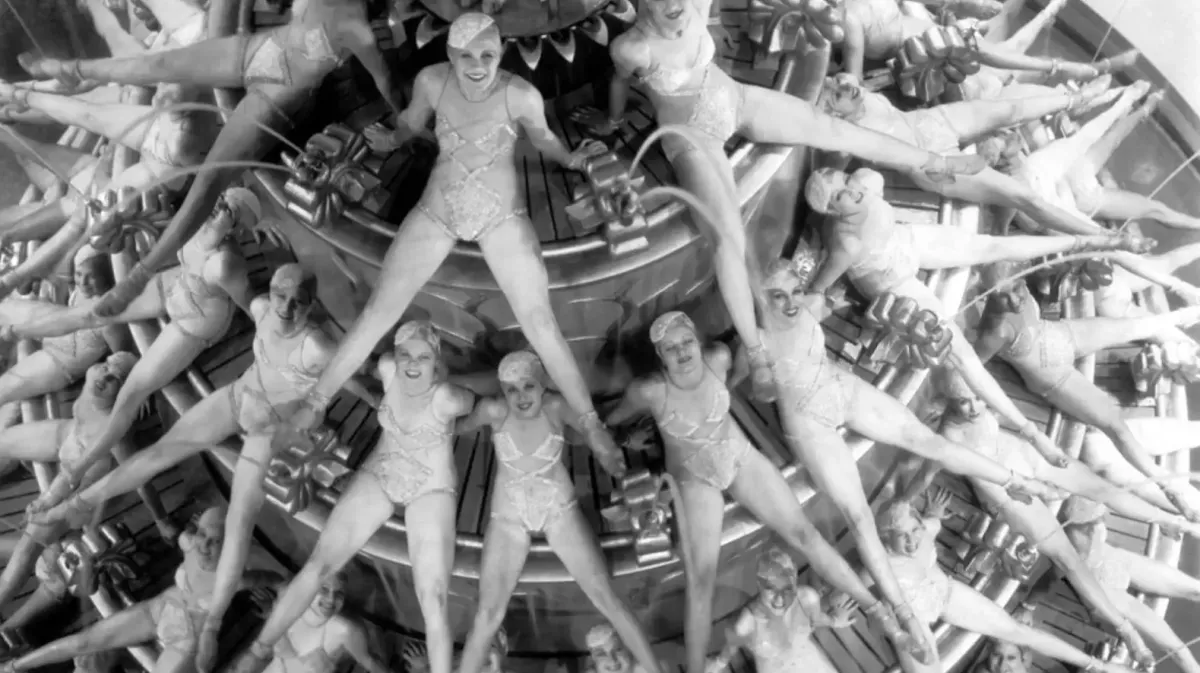
I typically reserve blog posts on my site for personal projects and tech-related writings, but I haven't been writing much lately and thought it might be good to shake off the cobwebs. For those who don't know me, I studied film production at Emerson College prior to switching majors to information systems so I watch a ton of films, love talking about movies, and even have a monthly movie club I host with a small group of friends. I'm certainly not an expert on film analysis or an historian by any means, I just occasionally love sharing my thoughts when a certain movie worms its way into my head.
Lately, I've been fascinated by the choreographed musical sequences of Busby Berkeley and have been watching a number of his films including Footlight Parade, Dames, 42nd Street and Gold Diggers of 1933. Of those films, I found Footlight Parade to be the most fascinating and hilarious in how these sequences are presented. In every single one of these Berkeley choreographed sequences, the diegetic audience within the film is watching all of these from within a theater. The film audience is treated with a presentation that exceeds the scope of possibility outside of the technical capabilities that cinema provides, and Footlight Parade revels in it.
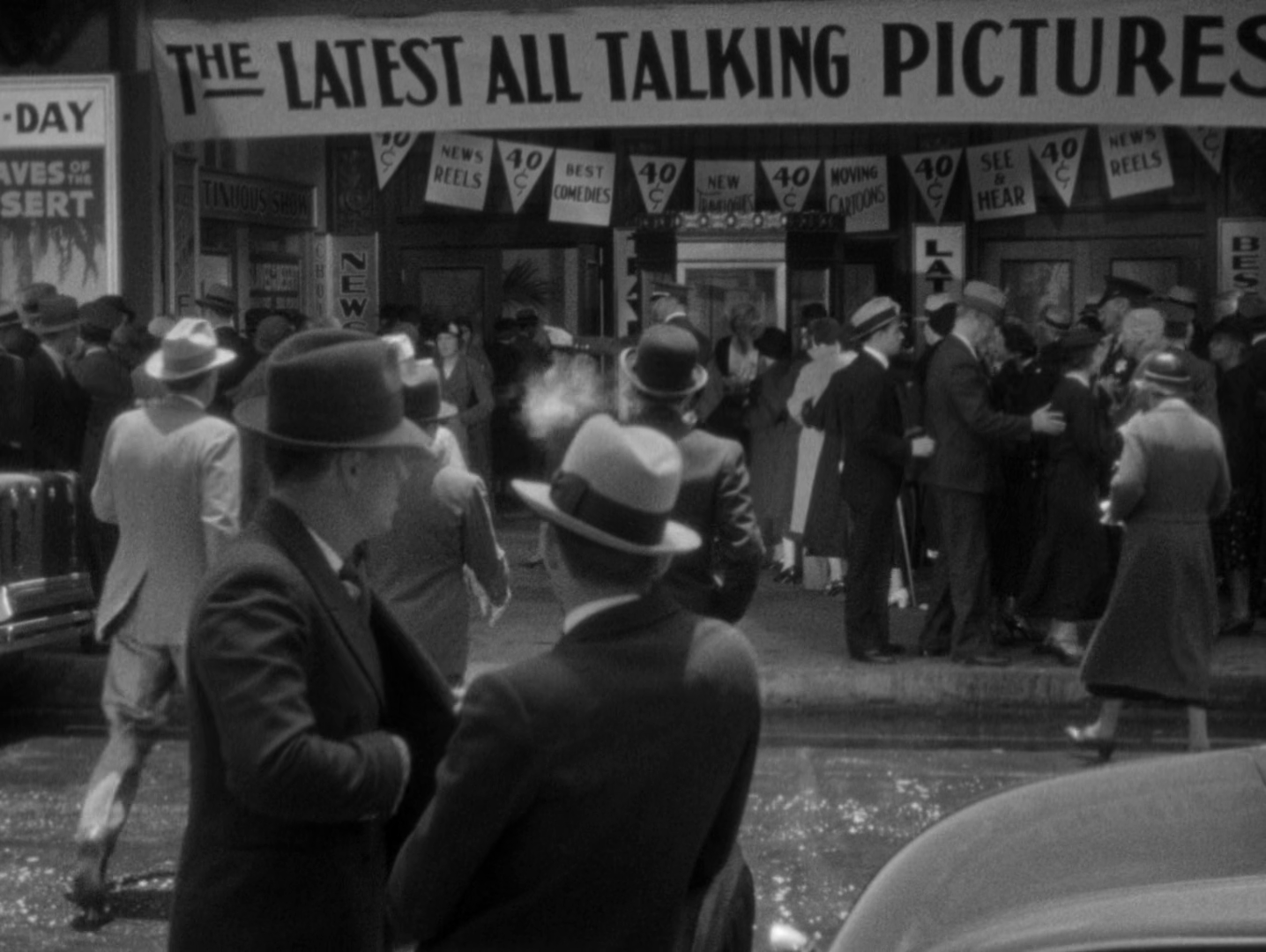
Footlight Parade is a "pre-code" Hollywood film which means it happened to be made in the small window of time between when sound pictures started taking off and the Hays code was not being enforced as strongly, roughly 1929 - 1934. In Footlight Parade, James Cagney's character is a failing Broadway director who has transitioned to directing "prologues", short live stage productions that would be performed in a theater ahead of a talking picture. His problem is that there is a competing prologue company that keeps stealing his ideas and he's also having trouble making the finances work.
The light bulb moment for Cagney is when he goes to a general store and buys some aspirin for 18 cents. He's amazed that the shop is able to charge so little when the shop next door is charging 25 cents. The shopkeeper tells Cagney that they're a chain store so they operate in volume and get to name their own price, which is how they are able to keep prices lower. This prompts Cagney to come up with the brilliant idea of operating in volume - staging multiple productions per night at multiple theaters and rushing the cast & crew onto a bus after each performance to get to the next show. What's funny here is that Cagney had to turn to retail economics to come to this realization when it's the exact same reason that cinema ended up dominating over live performance; theaters can pack crowds into multiple showings per day. Footlight Parade is already using the new technology of synchronized sound to make a commentary on the downfall of live stage performances as cinema continues to grow.
While waiting to see the final musical numbers, we are shown a behind-the-scenes process of the theater trying to put together the acts for their prologues. One of these prologues is an incredibly cheesy act involving the performers dressed in awful cat costumes performing the song "Sittin' on a Backyard Fence". The stark contrast between this and the final numbers further demonstrates the silly impossibility of the grandiose Busby Berkeley acts.
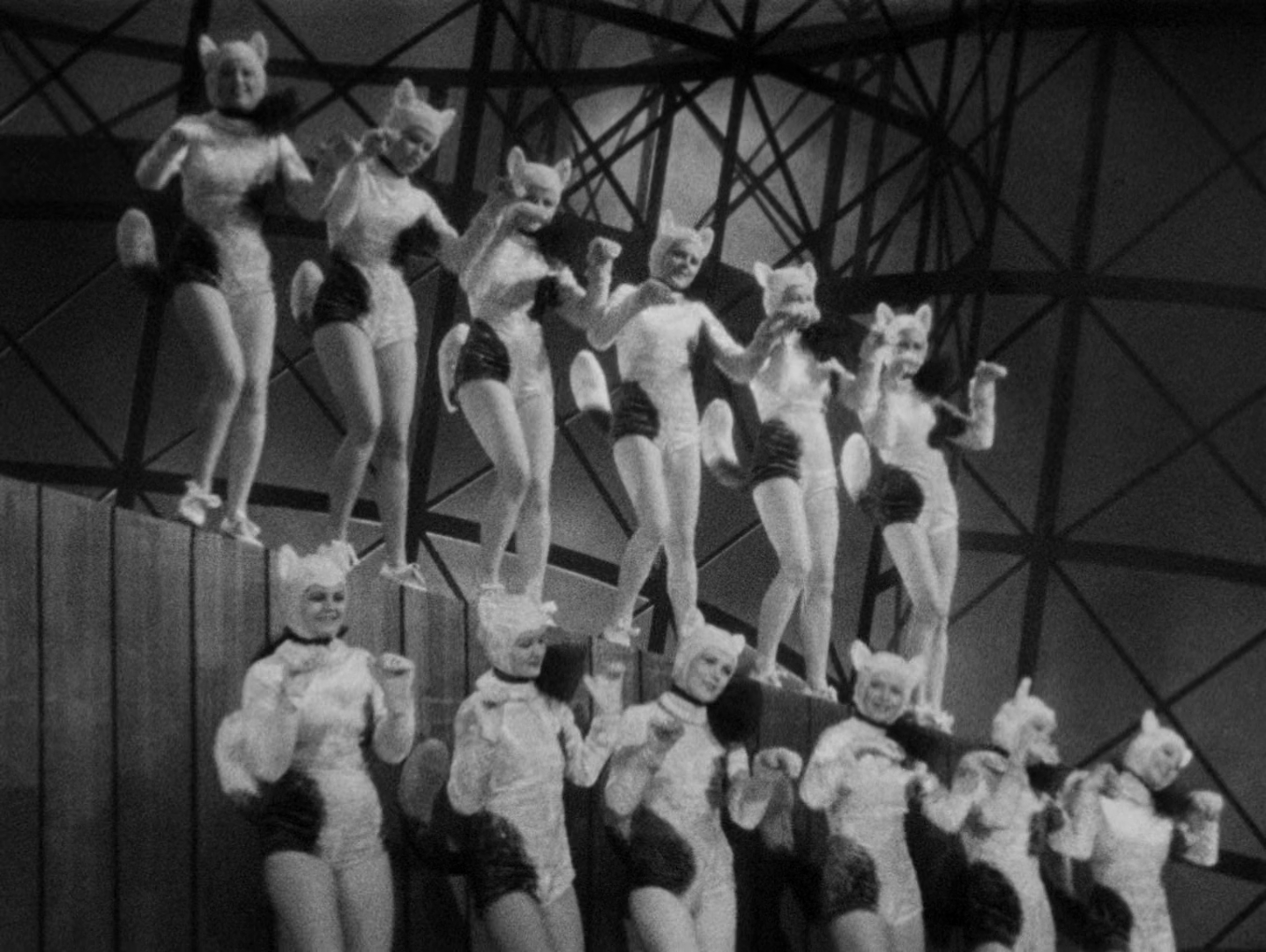
As the first musical performance "Honeymoon Hotel" begins, we are immediately confronted with a difference between the experience of viewing as a member of the film audience vs. the diegetic theater audience. Dick Powell and Ruby Keeler enter the stage with the camera focused on their legs as they sing and move in front of a cart full of luggage. Bellboys begin to remove pieces of luggage and provide us with the reveal of the stars. It would seem odd as a member of the diegetic audience to immediately see the two performers enter stage left, conceal themselves, then re-reveal themselves and it really only works in a cinematic format.
There are far too many examples of this kind of play on the advantages of cinema to name every single one (wild scene transitions, brief animation, grand set changes), but one other moment that outlines this is when the camera pulls back to show that while us viewers have been seeing close-up shots of the action, an impossibly large cutaway set of the hotel has somehow made its way onto the theater stage.
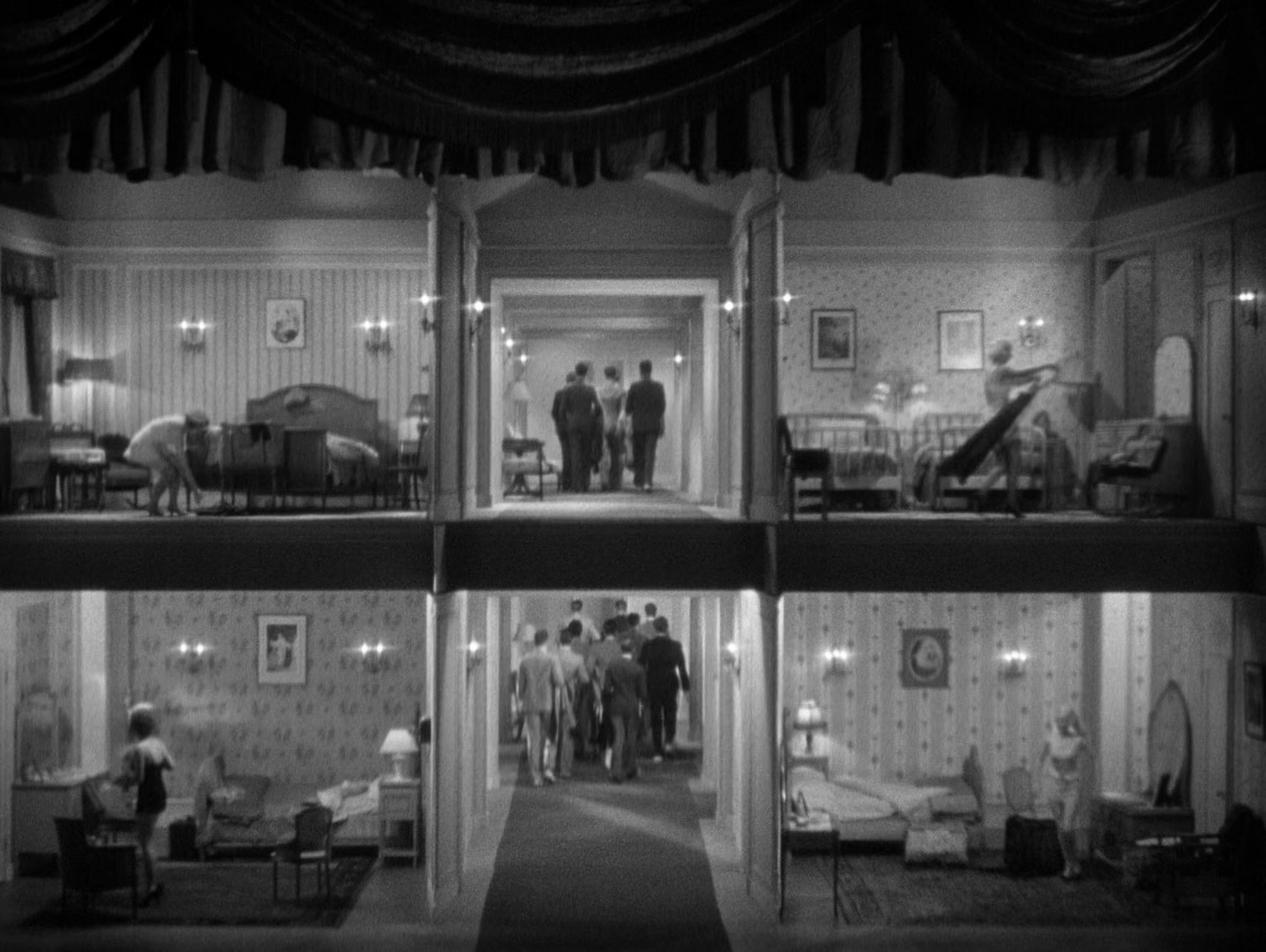
When the second musical sequence "By a Waterfall" begins, the curtain opens on an enormous, ornate set complete with a waterfall that has inconceivably been setup on a modest theater stage presumably in between screenings of talking pictures. As the song continues, the set continues to grow in size and absurdity while the cinematography shows the film audience shots from overhead and underwater that mesmerize which the diegetic theater audience couldn't possibly have any notion of. This isn't new for a Busby Berkeley picture by any means, but it certainly takes on a different level of absurdity when the plot follows that these prologues are to save live theater in the wake of talking pictures.
As "By a Waterfall" ends, the scene almost seamlessly transitions from a shot of Ruby Keeler in the water to her on land, clothed and splashing water from a babbling brook at Dick Powell to wake him. The audience gives a nice, modest applause and the competing producer even feigns a lack of enjoyment.
The final segment of Footlight Parade, "Shanghai Lil", is pretty wild and features a lot of offensive yellowface along with US nationalist propaganda that not only dates the film but unfortunately left a sour taste in my mouth. There are some very interesting impossible theatrical moments that I'd still like to highlight, however.
When Cagney enters the dressing room of the lead for the final musical number, he finds that not only is the lead drunk but has had very little theatrical experience ("an amateur!?... I might have known it."). Regardless, Cagney presses him, throwing his tuxedo jacket on and forcing him towards the stage despite the "amateur's" insistence that he can't do it. They climb a staircase next to the dressing rooms angled away from the stage and as the curtain raises, one of these men tumbles down the stairs and magically appears on the set.
Soon after, it's revealed that Cagney, not the "amateur", was the man at the bottom of the stairs all along.
As the musical number comes to a close, Jimmy Cagney shows Ruby Keeler a rudimentary flipbook sketch of their boat sailing away drawn on a deck of cards. While we, the film audience, get to view the animation from the protagonists' perspective, the theater is treated is simply treated to Cagney holding up a deck of cards and pointing.
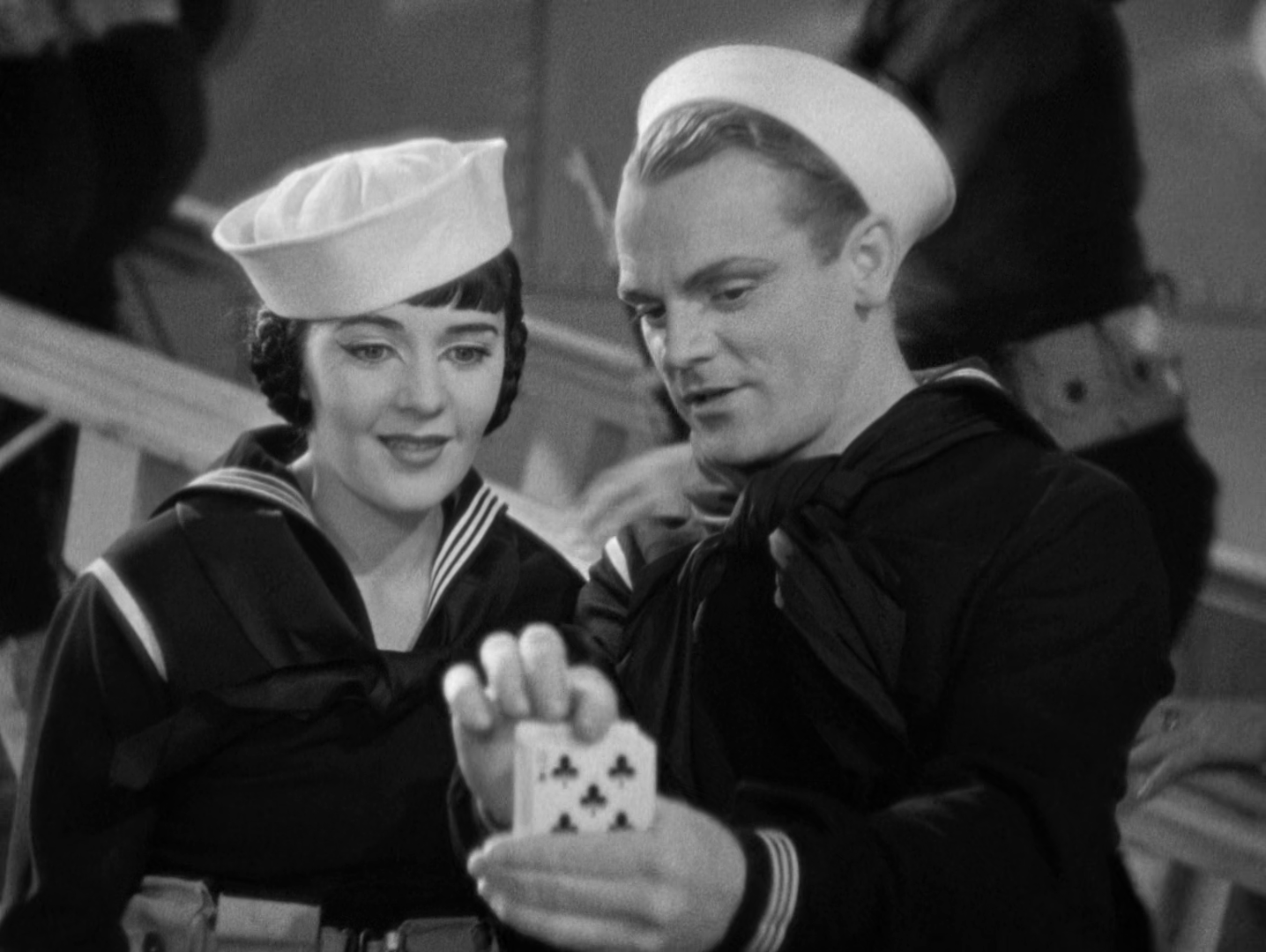
Imagining any of these scenes from the perspective of the diegetic theater audience is either an impossible or hilarious exercise and I can only imagine would have given film audiences at the time a much fonder appreciation for the relatively new technology of moving pictures.
While I can't say that any of these films as a whole is a masterpiece, segments such as the human waterfall truly are amazing to watch. Busby Berkeley had an incredible eye for choreography in the age of early cinema and used the medium to its full potential at the time, focusing on the only audience that could appreciate his vision.